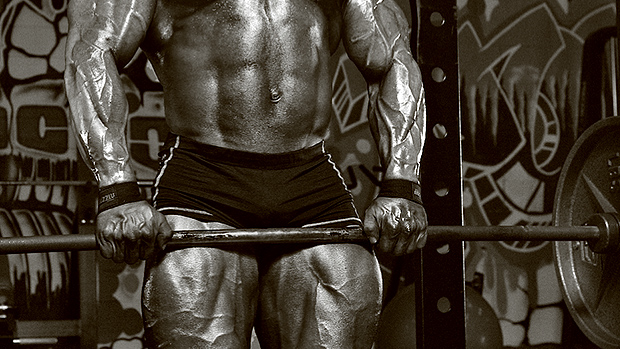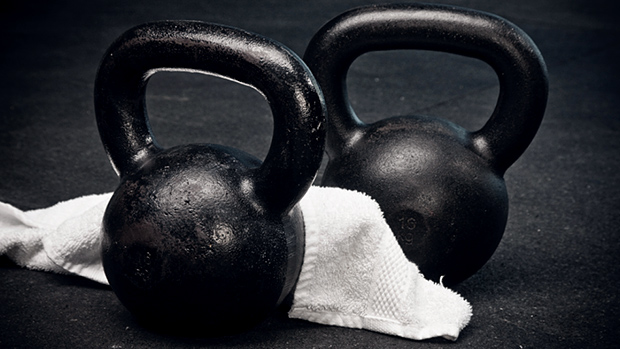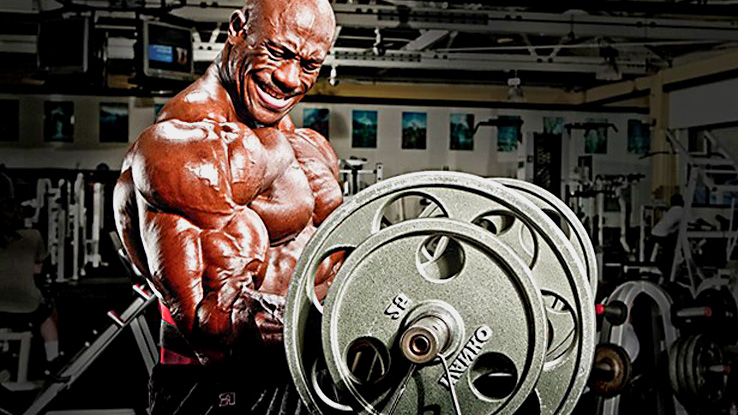"The only difference between a rut and a grave is the depth."
–Gerald Burrill
Sometimes training can become monotonous and you find yourself stuck in a rut. If you don't shake things up, you'll end up like that geek at your gym that's been bench pressing 185 pounds for ten years. You know who I'm talking about. Every gym has at least one and they often enjoy reading the Wall Street Journal between sets.
In addition to blasting through plateaus, sometimes you need to shake things up to address weak links and imbalances. Here are two methods to keep your training interesting and to keep you on the path of progress.
Method 1: Super Negative Repetitions
Studies show that the more control you use when lowering a weight, the more weight you'll be able to lift. One of the reasons for this is that the lowering phase loads the muscles that'll be used to execute the positive or concentric portion of an exercise.
Don't believe me? Try this test: Set up a power rack and lower the pins to just above your chest. Take your normal bench press one rep max and try pressing it from the bottom position. If you haven't trained bottom position bench presses, then I really doubt the bar will move at all!
When you bench press and take advantage of the lowering phase, your concentric muscles get warmed up and loaded. Thus, one way to improve your concentric strength is to improve your eccentric or negative strength.
I discussed negative training with strength coach Charles Poliquin recently and he revealed a great tempo speed that really emphasizes negatives. To illustrate, let's use the example of a barbell squat. Lower yourself to the bottom position in fifteen seconds. Once you get to the very bottom, explode upward as fast as possible.
Charles explained that one of the reasons this method works so well is that you'll have a natural urge to complete the concentric phase as fast as possible after taking so long to lower the weight. In addition, your concentric muscles will be fully loaded and ready to fire. Charles is having great success with this method and I recommend you give it a shot.
This technique can be applied to a number of exercises, but I suggest you stick with compound movements such as military presses, squat, chin-up, bench presse, and barbell row. Also, since there's such an emphasis on the negative portion, keep the rep range between one and three.
Here's one way to gradually break into this type of training:
Phase 1: Do six sets of one rep with five-second negatives and one-minute breaks between sets. Use a weight you can lift three times with solid form. Once you can complete all of the sets with the same weight, increase the negative portion to ten seconds.
Phase 2: Do six sets of one rep with ten-second negatives and one-minute breaks between each set. Again, use a weight you can lift for three reps with solid form. Once you can complete all six sets with the same weight, increase the negative to fifteen seconds.
Phase 3: Do six sets of one rep with fifteen-second negatives and one-minute breaks. Again use a weight you can handle for three reps with solid form. Once you can complete all six sets, add two more sets for a total of eight. Once you can do that, add another two sets for a total of ten sets per exercise.
Phase 4: Do ten sets of one rep with fifteen-second negatives and one-minute breaks. Once you can complete all ten sets, decrease the rest periods to forty-five seconds. Once you can complete all ten sets with forty-five second breaks, decrease the breaks to thirty seconds. Finally, once you can complete all ten sets with thirty-second breaks, increase the weight by ten pounds and start with one-minute breaks again.
Pick one or two exercises you really want to improve with this method and try it for six weeks. I think you'll be very happy with the increases in strength and size. Also, there's no need to purchase a metronome and get anal about timing the negatives. Just count slowly or have your workout partner count the negatives.
Method 2: Super-Static Repetitions
Static strength is one area of strength many athletes tend to overlook. Static strength involves holding a weight in a certain position of an exercise for a set amount of time. One example is holding the top position of a chin-up for five seconds. If you've never tried static-strength training before, you're in for a surprise. First, you'll probably discover several weak links. Second, you're going to get incredible pumps!
Try holding the top position on a chin-up for ten seconds and flex your lats as hard as possible. You'll love the pump! Static strength is also very useful for combat athletes such as wrestlers and grapplers that need to be able to hold certain positions for extended periods.
One way to make the best use of static training is to implement it in areas of an exercise where you're weak. For example, if you're weak in the middle position of the bench press, try holding that position for five to ten seconds. Make sure to try this in a power rack or with a good spotter, as you'll probably not be able to complete the lift.
If you really want to have "fun" with static repetitions, try what I like to call "super static" reps. Super-static training involves holding a position in an exercise for fifteen seconds. Here's a way to work up to fifteen-second static holds.
Phase 1: Do six sets of one rep with five-second static holds and one-minute rest periods between sets. Pick an area that you're weak in and hold it there for five seconds. Use a weight you can lift for three solid repetitions. Once you can complete all six sets with the same weight, increase the static hold time to ten seconds.
Phase 2: Do six sets of one rep with ten-second static holds and one-minute rest periods between sets. Again pick a weight you can lift for three reps with solid form. Once you can complete all six sets with the same weight, increase the static hold time to fifteen seconds.
Phase 3: Do six sets of one rep with fifteen-second static holds and one-minute rests between sets. Once you can complete all six sets with the same weight, add two more sets for a total of eight. When you can complete eight sets, add two more for a total of ten.
Phase 4: Do ten sets of one rep with fifteen-second static holds and one-minute rest periods between sets. Once you can complete all ten sets with one-minute breaks, decrease the rest periods to forty-five seconds. When you've achieved that, go down to thirty seconds. Finally, when you've achieved that, increase the weight by ten pounds.
Again, similar to the super negatives, pick two or three exercises you really want to improve and try super static holds for six weeks. If super static holds aren't enough "fun" for you, try doing static holds in three different positions of each exercise. For example, military press a weight to lockout. Lower the bar two inches and hold it there for five seconds. Then lower it another two inches and hold it there for five seconds and so forth. This method is a real killer and not for the faint of heart!
No more excuses! Break through that plateau!




